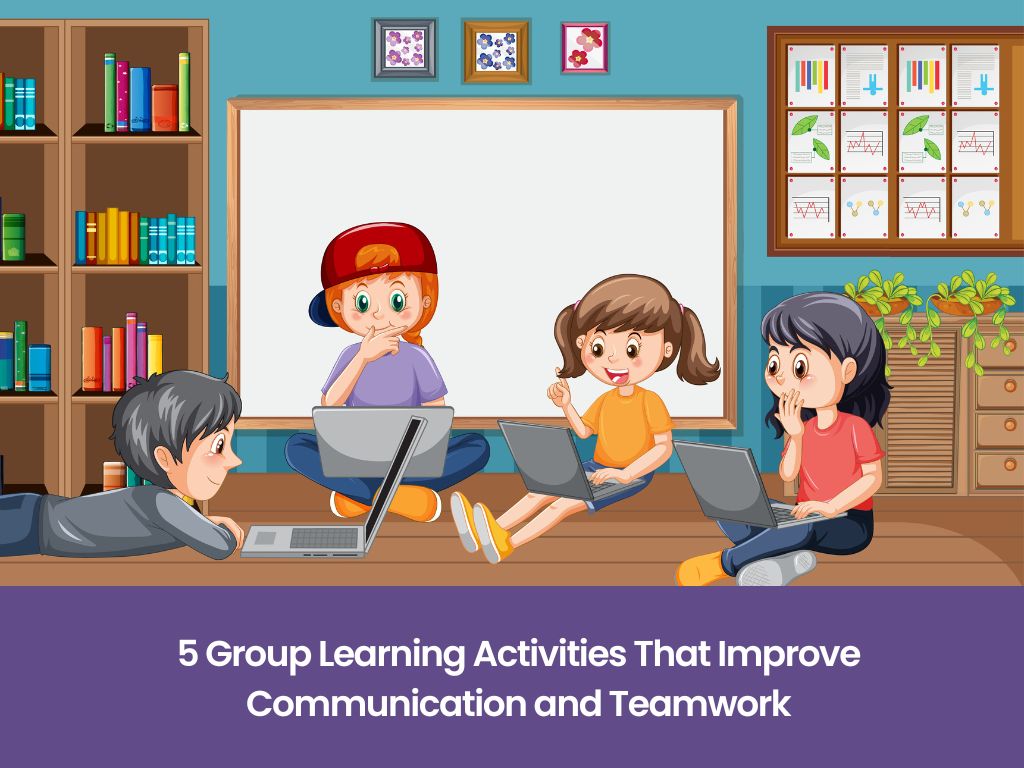5 Group Learning Activities That Improve Communication and Teamwork
posted on Nov 04, 2025
Explore five fun classroom group learning activities that boost teamwork, communication, and collaboration skills among students for holistic development.

Introduction
Group learning is more than just a classroom trend — it’s a transformative approach that turns lessons into opportunities for collaboration, communication, and creativity. In today’s education system, teamwork and communication are not optional skills; they’re essential for academic success and personal growth. Engaging group activities not only make learning enjoyable but also help students become confident leaders, empathetic listeners, and effective problem solvers.
At Bgs Vijnatham School, one of the Best School in Noida Extension, teachers weave collaborative learning into everyday lessons. Through creative and well-structured group exercises, students learn to express their ideas, respect different viewpoints, and build a sense of community. Let’s explore five powerful classroom activities that strengthen both teamwork and communication among learners.
1. Debate Circles: Learning to Speak, Listen, and Respect
Debate circles are a dynamic way to develop verbal communication and empathy. Students are divided into small teams and given engaging topics such as “Should schools have uniforms?” or “Is technology helping or hurting creativity?” Each side presents its arguments, followed by rebuttals and audience feedback.
Why it works:
Debate circles encourage students to listen carefully, think critically, and speak confidently. They also teach the value of respectful disagreement — a crucial skill for real-world conversations. Teachers can guide students to focus on tone, body language, and factual reasoning, turning debates into exercises in emotional intelligence and public speaking.
2. The Problem-Solving Circle: Collaboration Through Critical Thinking
This activity combines creativity, communication, and teamwork in one engaging session. Students form small groups and are presented with real-life challenges — for example, designing an eco-friendly school canteen or finding ways to reduce plastic waste on campus. Each group brainstorms ideas, evaluates feasibility, and presents their best solution to the class.
Why it works:
Every student gets a voice in the process, promoting inclusivity and confidence. By exchanging diverse opinions, learners practice analytical thinking and cooperative decision-making. The problem-solving circle mirrors real-world collaboration, where effective communication is key to innovation and success.
3. The Group Mural Project: Creativity Meets Collaboration
Few activities capture teamwork better than a shared art project. In the group mural challenge, students collectively design and paint a mural based on themes such as “Unity in Diversity,” “Sustainable Future,” or “Dream Big.” Each child contributes sketches, colors, or details, ensuring that every member plays a vital role in completing the masterpiece.
Why it works:
The mural project teaches patience, creativity, and shared responsibility. Students learn how to blend individual styles into a single vision, fostering a sense of pride in collective achievement. The final artwork serves as a visual reminder of what collaboration can accomplish — a perfect example of teamwork in action.
4. The Chain Story Challenge: Building Communication Through Creativity
Storytelling is one of the most effective ways to build communication and imagination in students. In this group activity, the teacher starts with one line — for instance, “The school library suddenly turned into a spaceship!” — and each student adds a sentence to continue the narrative. The story grows unpredictably, with every participant contributing twists, turns, and surprises.
Why it works:
Students must listen carefully to maintain coherence and relevance, which strengthens attentive listening and quick thinking. This collaborative storytelling exercise not only enhances verbal fluency but also helps shy students find their voice in a supportive, laughter-filled environment.
5. The Silent Construction Game: Communication Without Words
In this unique non-verbal challenge, students are grouped into teams and asked to build something — perhaps a tower, bridge, or model — using simple materials like straws, blocks, or paper cups. The twist? They can’t talk throughout the activity.
Why it works:
Without words, students learn to communicate through gestures, eye contact, and teamwork. This activity deepens their understanding of non-verbal cues and the importance of observation in collaborative settings. A post-activity reflection session helps them discuss what worked, what didn’t, and how silence can sometimes speak volumes in teamwork.
Why Group Learning Matters More Than Ever
Modern education goes beyond memorizing facts — it’s about developing critical life skills. Group learning helps students become better listeners, negotiators, and thinkers. It encourages a mindset of shared success rather than individual competition. When students collaborate, they learn how to balance different personalities, resolve conflicts, and appreciate diverse perspectives — qualities essential in today’s global world.
At Bgs Vijnatham School, one of the Best School in Greater Noida West, collaboration is at the heart of classroom culture. From project-based assignments to team challenges, educators ensure every child experiences the power of working together. These experiences not only enhance academic understanding but also prepare students for a future where teamwork drives progress and innovation.
Encouraging Reflection After Every Activity
One of the most valuable steps after a group exercise is reflection. Teachers can hold short discussions or journaling sessions where students express what they learned about teamwork and communication. Questions like “What role did you play in your group?” or “How did your team handle disagreements?” help students identify strengths and areas for improvement.
Reflection transforms group activities from mere classroom fun into meaningful lessons in collaboration, empathy, and leadership.
Conclusion: Shaping Future Leaders Through Group Learning
Group learning activities do more than fill classroom time — they nurture confident, communicative, and cooperative learners. When students engage in shared problem-solving, storytelling, debates, or creative projects, they learn to respect others, express themselves clearly, and value collective success.
Schools that prioritize collaboration help students grow into well-rounded individuals equipped for the challenges of the modern world. When communication and teamwork become a natural part of learning, education evolves into a journey of shared discovery — one where every voice contributes to success.